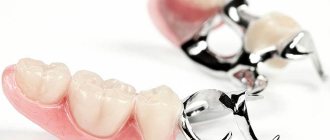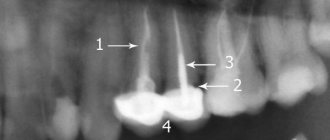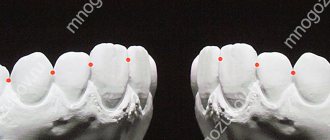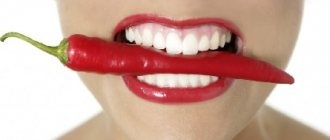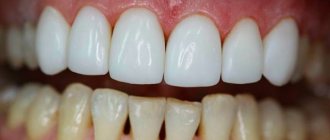Scientists have proven that a smiling person evokes more sympathy than even the most beautiful but gloomy top model. Moreover, employers are more loyal to those with healthy and beautiful teeth. Such people give the impression of being more responsible and efficient. And Dutch researchers claim that with a smile a person always looks younger than his age. How to achieve an ideal smile and what to do if nature has not endowed you with beautiful teeth, says Ilgam Vagifovich Mamedov, leading orthopedist and chief physician of the German Center for Aesthetic Dentistry SDent in Moscow.
Parameters of an ideal smile
It would seem that it could be simpler: white, even teeth, a complete dentition, absence of dental diseases - that’s all you need. But creating an ideal smile in dentistry is a whole science, and the doctor does not act as a doctor, but rather as an artist creating a full-fledged work of art. An ideal smile has certain parameters that modern aesthetic dentistry focuses on.
- Parallelism of horizontal lines
: the eyes, the cut of the mouth, the cutting edges of the front incisors and an imaginary line connecting the cutting edges of the canines.
- Visual reduction in tooth size from the center to the edges
, allowing you to create the illusion of perspective. In this case, the ratio of the width of the anterior incisors, lateral incisors and canines is 1.6:1:0.6, and the width of the anterior incisors relates to their height as 0.7 - 0.8 to one. The front incisors should meet on the projection of the midline of the face, connecting the middle of the bridge of the nose and the center of the chin. In addition, the edges of the upper teeth should follow the curve of the lower lip, and the upper lip should cover the gum line of the teeth, leaving only triangles between the teeth.
- When creating the perfect smile, we also take into account the height of the concave gum line around the necks of the teeth and its level for each group of teeth
, interdental angles, which should increase from the incisors to the molars, the sharpness of the incisor angles, which is more pronounced in men than in women, and many more parameters. For example, the incisal edges of the incisors may protrude a little more to create a more aggressive appearance. This masculine smile is considered ideal for the stronger sex, because it allows you to create the illusion of strength, success, and self-confidence.
What kind of smiles are there?
Duchenne's smile
The first steps towards deciphering this multi-purpose expression were taken by the 19th century neurologist Duchesne de Boulogne. He was the son of a French pirate and had a penchant for electrocuting his patients—and became, among other things, the founder of electrotherapy. Duchenne was interested in the mechanics of facial expressions, including how the facial muscles contract to produce a smile. The best way to study this, he decided, was to attach electrodes to a person's face and make their muscles move.
This procedure was so painful that at first Duchesne could only experiment on the freshly severed heads of revolutionaries. Then one day, purely by chance, he met a middle-aged man with facial insensibility in a Paris hospital - that is, he found his guinea pig among people.
In total, Duchesne discovered 60 facial expressions, each involving its own group of facial muscles, and depicted them in a series of gruesome photographs. In the most famous of them, the face of the unfortunate man is distorted by a wide toothless smile. He looks like a happy idiot, with his cheeks lifted and crow's feet around his eyes.
This smile became known as the "Duchenne smile" and became associated with genuine feelings of joy and giddy happiness. This smile is long and tense, although it is associated with the contraction of only two muscles. First, the zygomaticus major muscle, which is located in the cheek, tightens the corners of the mouth, and then the orbicularis oculi muscle, which surrounds the eye, leads to the characteristic wink.
This smile is long and tense, although it is associated with the contraction of only two muscles.
But here's the rub. "In some places in the world, the perception of a genuine smile does not seem to depend on the presence of crow's feet near the eyes," says Niedenthal.
Which brings us to a question that has puzzled scientists for more than a century, from Darwin to Freud: Are our expressions instinctive and universal, or dependent on the culture into which we are born?
Smile of fright
One of the clues comes from our closest relatives. Although the Duchenne smile may seem most natural today, some scholars believe it may have originated from an expression with a completely different meaning. "When bonobo chimpanzees are afraid, they bare their teeth and pull their lips back to expose their gums," says Zanna Clay, a primatologist at the University of Birmingham.
The barely-toothed smile is often shown on greeting cards, but among chimpanzees it is a submissive gesture used by low-status individuals to appease dominant members of the group. Clay cites the example of a popular video of a chimpanzee stealing a rock. “She steals a rock and then shows a big, cheeky smile. She looks like she's laughing, but she's probably nervous," Clay says.
Although we don't tend to associate smiling with fear in people, there are some hints that smiling may be caused by fear. In babies, a wide smile can mean they are happy or worried, and studies have shown that men tend to smile more among those perceived to be of higher status.
Darwin believed that facial expressions were instinctive, originally developed to serve practical functions. For example, raised eyebrows increase the field of vision, which may have helped our ancestors detect predator ambushes in time. In chimpanzees, a fearful smile shows that the teeth come together tightly, as if to show that they are not going to bite anyone.
To prove his point, Darwin conducted an experiment at his home in Down, a quiet village near London. He took 11 photographs of Duchenne—they corresponded regularly—and asked 20 of his guests to guess what emotions they represented. They unanimously identified happiness, fear, sadness and surprise, among others, and Darwin concluded that these expressions were universal.
Sad smile
We now know that smiling is indeed instinctive, but not only when we are happy. A "sad smile" is a stoic expression of a martyr's smile - a slight, asymmetrical smile with an expression of deep sadness on top of it.
Since Landis conducted his classic study, psychologists have found this tell-tale smile on the faces of those watching sad movies - filmed with a hidden camera - and among patients with depression. This is a socially acceptable way to show that you are sad or hurt.
For decades, psychologists believed that this controversial habit was unlearned, but in 2009, a team of scientists from the University of San Francisco found clear indications that, no, smiling is hardwired into our DNA.
After analyzing more than 4,800 photographs of athletes who competed in the Athens Summer Olympics, they found that silver medalists who lost their final matches tended to smile like this, even if they were born blind.
Suppressed Smile
However, things are even more complicated. It turned out that a sincere, happy smile was not always welcomed as much as it is today. Back in 17th century Europe, open display of emotions was considered bad manners. Only the poor smiled, showing off their teeth. The "Smile Revolution" finally began more than a century later in Paris, started by French nobles who had such a good time in the newly opened coffee shops that they brought the smile back into fashion.
In many parts of the world this change in etiquette never occurred. A Russian proverb says that laughing for no reason is a sign of foolishness, and a government leaflet about working in Norway warns that you've been in the country too long if you think smiling strangers are drunk, mad or American.
Repressed smiling is a way to control automatic, happy smiling that is available to us because some muscles are easier to suppress than others. “The cheeks will be raised, but the corners of the mouth will be pulled down, and the lips will be pressed together in an 'I'm not supposed to smile' way,” says Zara Ambadara, a cognitive psychologist at the University of Pittsburgh.
This is thought to explain why in Japan, where etiquette dictates that emotions should be suppressed in public, more emphasis is placed on smiling with the eyes. Pushed to the limit, such a smile from


